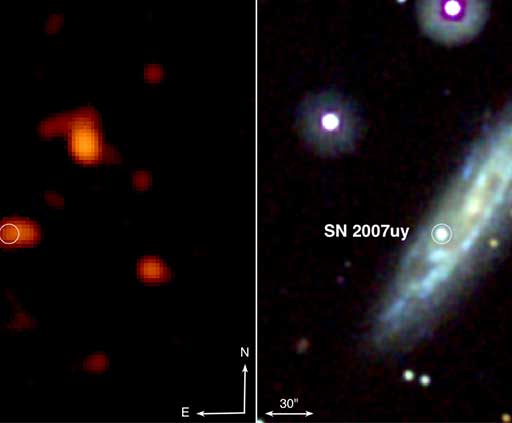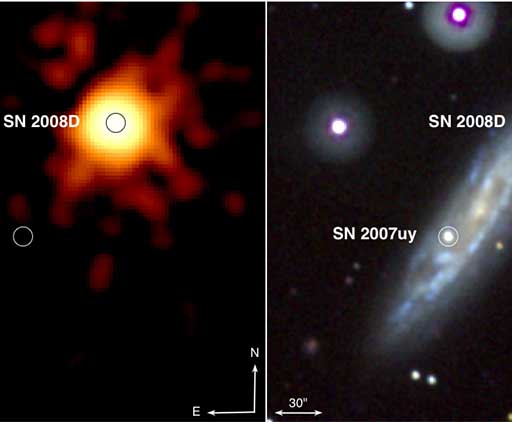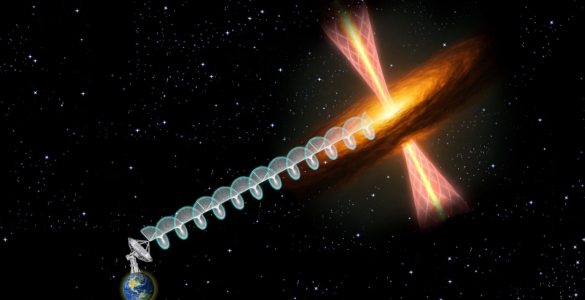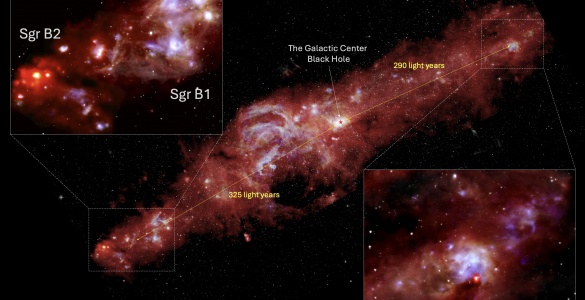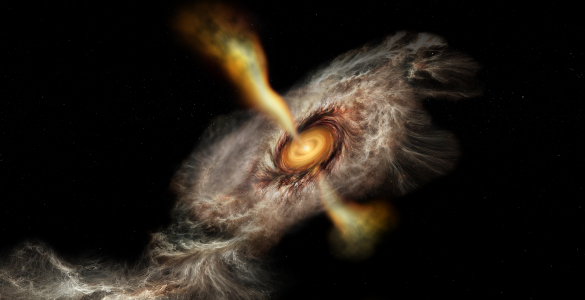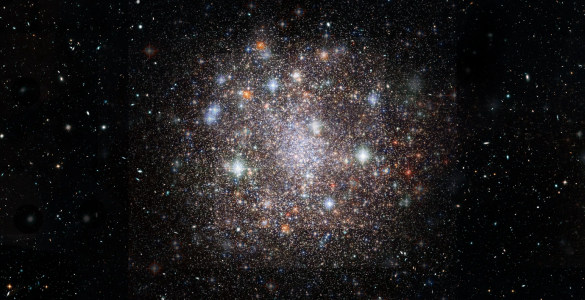Through a stroke of luck, astronomers have witnessed the first violent moments of a stellar explosion known as a supernova. Astronomers have seen thousands of these stellar explosions, but all previous supernovae were discovered days after the event had begun. This is the first time scientists have been able to study a from its very beginning. Seeing one just moments after the event began is a major breakthrough that points the way to unraveling longstanding mysteries about how such explosions really work.
“For years, we have dreamed of seeing a star just as it was exploding,” said team leader Alicia Soderberg, a Hubble and Carnegie-Princeton Fellow at Princeton University. “This newly-born supernova is going to be the Rosetta Stone of supernova studies for years to come.”
Theorists had predicted for four decades that a bright burst of X-rays should be produced as the shock wave from a supernova blasts out of the star and through dense material surrounding the star. However, in order to see this burst, scientists faced the nearly-impossible challenge of knowing in advance where to point their telescopes to catch a supernova in the act of exploding.
On January 9, luck intervened. Soderberg and her colleagues were making a scheduled observation of the NGC 2770, 88 million from Earth, using the X-ray telescope on NASA’s Swift satellite. During that observation, a bright burst of X-rays came from one of the galaxy’s spiral arms.
Soderberg led a 38-person international scientific team that quickly began an intensive effort to study the new object using both orbiting and ground-based telescopes. In order to conclude that they had, in fact, seen the predicted early burst of X-rays from a supernova, they needed to eliminate alternative explanations, such as a , and then to show that, as time went on, the object behaved like a normal supernova.
The scientists scrutinized the object with Swift’s gamma-ray instrument, the Chandra X-ray Observatory, and the Hubble Space Telescope. On the ground, they used the Gemini North telescope and the Keck I telescope in Hawaii, the 200-inch and 60-inch telescopes at Palomar Observatory in California, the 3.5-meter telescope at Apache Point Observatory in New Mexico, and the National Science Foundation’s Very Large Array (VLA) and Very Long Baseline Array (VLBA) radio telescopes.
The VLA and VLBA provided key information that showed the object evolving in a pattern similar to other supernovae.
“The data from all these telescopes confirmed that what we were seeing is indeed a supernova and not some new type of object. That initial X-ray burst thus is the earliest observation ever of an exploding star,” Soderberg said.
The scientists are excited at the prospects of learning vital new details that will help them settle longstanding controversies about the mechanisms of supernova explosions.
Stars much more massive than our Sun end their lives in supernova explosions, as they run out of fuel for the thermonuclear reactions that power them. With no more energy being released at the star’s core, the core collapses. Further collapse of the star is thought to cause a violent rebound that blasts most of the stars’s material into space. What remains is a superdense or a .
The details of this scenario, however, are not well understood, and astronomers differ over the exact mechanisms. Much of the difficulty in understanding the process comes from the fact that, until now, supernovae were only detected after the initial explosion was over.
“We think that every core-collapse supernova will show an X-ray burst like this one. If so, with the right instruments, we should be able to discover and study several hundred of them every year. Astronomical instruments planned for the future should then allow us to finally unravel the mystery of how these explosions occur,” Soderberg said.
The scientists are reporting their findings in an article in the journal Nature.
The National Radio Astronomy Observatory is a facility of the National Science Foundation, operated under cooperative agreement by Associated Universities, Inc.
Contact:
Dave Finley, Public Information Officer
Socorro, NM
(575) 835-7302
dfinley@nrao.edu






